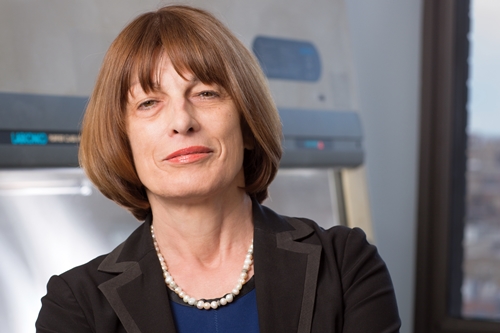16 June 2016. Biomedical engineers developed techniques for growing personalized replacement facial bone from stem cells that in tests with pigs precisely fit their recipients’ faces. The team from Columbia University in New York published its findings in yesterday’s issue of the journal Science Translational Medicine (paid subscription required).
The researchers led by biomedical engineering professor Gordana Vunjak-Novakovic are seeking more productive methods for reconstructing facial bone tissue to treat accident injuries and other trauma, or deformities from cancer surgery or birth defects. Current techniques usually transplant bone and skin tissue from other parts of the body, which the authors say are difficult to precisely fit the faces of recipients, and often cause pain and complications.
Vunjak-Novakovic’s team — with colleagues from Columbia’s dentistry school, Tulane and Louisiana State Universities, and the companies epiBone and LaCell LLC — are developing a process growing new bone tissue from stem cells derived from adipose or fat tissue in the recipient. The stem cells are then grown on a scaffold made of decellularized cattle bone matrix, designed from CT scan images of the recipient’s face, using precise milling techniques guided by the images. The stem cells are cultured on the scaffold in a bioreactor, feeding nutrients, oxygen, and metabolites to grow into immature bone tissue, a process taking about 3 weeks. The new bone tissue is then transplanted into the recipient’s face, which integrates with and grows on the host bone at the injury site.
The researchers tested the process with 14 Yucatán minipigs, a type of miniature pig often used as a model in medical research for their similarities to aspects of human anatomy. The team chose bones in the ramus-condyle unit, a weight-bearing component of the jaw and skull to reconstruct in their tests. In addition, the researchers intentionally cultured the stem cells a long distance, about 1,200 miles, from the transplant surgery site to simulate realistic manufacturing and shipping conditions.
The team tested the new bone tissue 6 months after the transplants, comparing the results to pigs with similar injuries, but either without any treatment or with only the scaffolds implanted. The results show the stem-cell grown bone tissue integrated with the host bone, maintaining the same anatomical structure as the recipient. In addition, compared to the pigs without the new bone transplants, the recipients grew more bone tissue with normal blood vessel development.
“The need is huge, especially for congenital defects, trauma, and bone repair after cancer surgery,” says Vunjak-Novakovic in a university statement. “The quality of the regenerated tissue, including vascularization with blood perfusion, exceeds what has been achieved using other approaches.”
The researchers are now investigating addition of cartilage to regenerate tissue for more complex injuries, and advancing the technology through more preclinical stages. Vunjak-Novakovic and first author Sarindr Bhumiratana are co-founders of the spin-off enterprise epiBone Inc. in New York that licenses the bone-regeneration technology and is planning for clinical trials.
In the following video, Bhumiratana and epiBone CEO Nina Tandon tell more about the technology.
- Consortium Aims to Upgrade Cell Manufacturing
- Patent Awarded for Skin Stem Cell Regeneration Methods
- FDA Approves Trial Testing Stem Cells for Brain Injuries
- Challenge Seeks New Regenerative Tools with Stem Cells
- Stem Cell Biotech Licensing Blood Vessel Repair Technology
* * *


 RSS - Posts
RSS - Posts
[…] Engineered Facial Bone Grown from Stem Cells […]